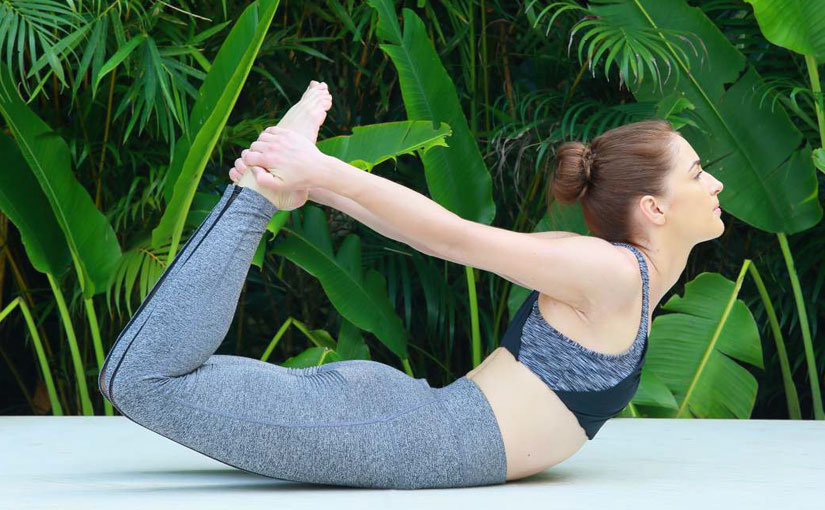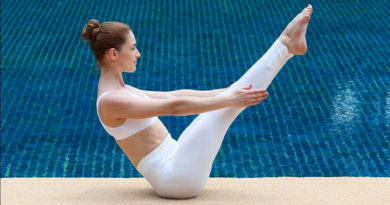Gomukhasana
The name Gomukhasana is derived from the sanskrit words ‘go’ meaning cow, ‘mukha’ meaning face and ‘asana’ meaning posture.
Instructions: Sit on the floor with your legs extended and held closely together. Bend your knee and slide your left foot under your right knee and place it outside your right hip. Then cross your right leg over the left, piling the right knee on top of the left, and bring your right foot to lie outside the left hip. Sit keeping the weight evenly distributed between the sitting/hip bones. Keep the spine erect and the shoulders expanded and away from the ears. Inhale and stretch your right arm straight out to the right while keeping it parallel to the floor. While exhaling sweep your arm behind your torso and tuck your forearm in the hollow of your lower back, with your right elbow against the right side of your torso and the fingers facing the neck. Glide the hand up gradually as far as you can towards the neck till the forearm is settled on the spine with your palm facing outwards and the back of the hand resting between the shoulder blades. Keep the right elbow tucked into the right side of your torso. Now inhale and extend your left arm forward and then turning your palm up stretch your arm straight up toward the ceiling with your palm turned back. Exhale and bend your elbow and stretch downwards as much as you can to clasp the right hand placed between the shoulder blades. Hook the fingers of the right and the left hand if you are comfortable. Keep your left elbow pointed towards the ceiling and the right elbow pointed towards the floor. The spine should be kept erect. And the left raised arm should be kept close beside the left side of your head. Hold the pose breathing calmly for a minute. Unclasp your fingers and release the hands to move out of the asana. Uncross your legs and repeat on the other side. Rest in a simple cross legged position for a few minutes once the asana is done on both sides. Beginners can use a scarf in case they find clasping of hands difficult to begin with.
Benefits:
- It tones and strengthens the muscles in the back.
- It stretches and strengthens the muscles of the ankles, hips and thighs, shoulders, triceps, inner armpits and chest.
- It provides relief from sciatica.
- It stimulates the kidneys and is very good for diabetics.
- It calms the mind and reduces stress and anxiety.
Caution:
- This asana should be avoided by persons suffering from shoulder, knee or back pain and injuries.




